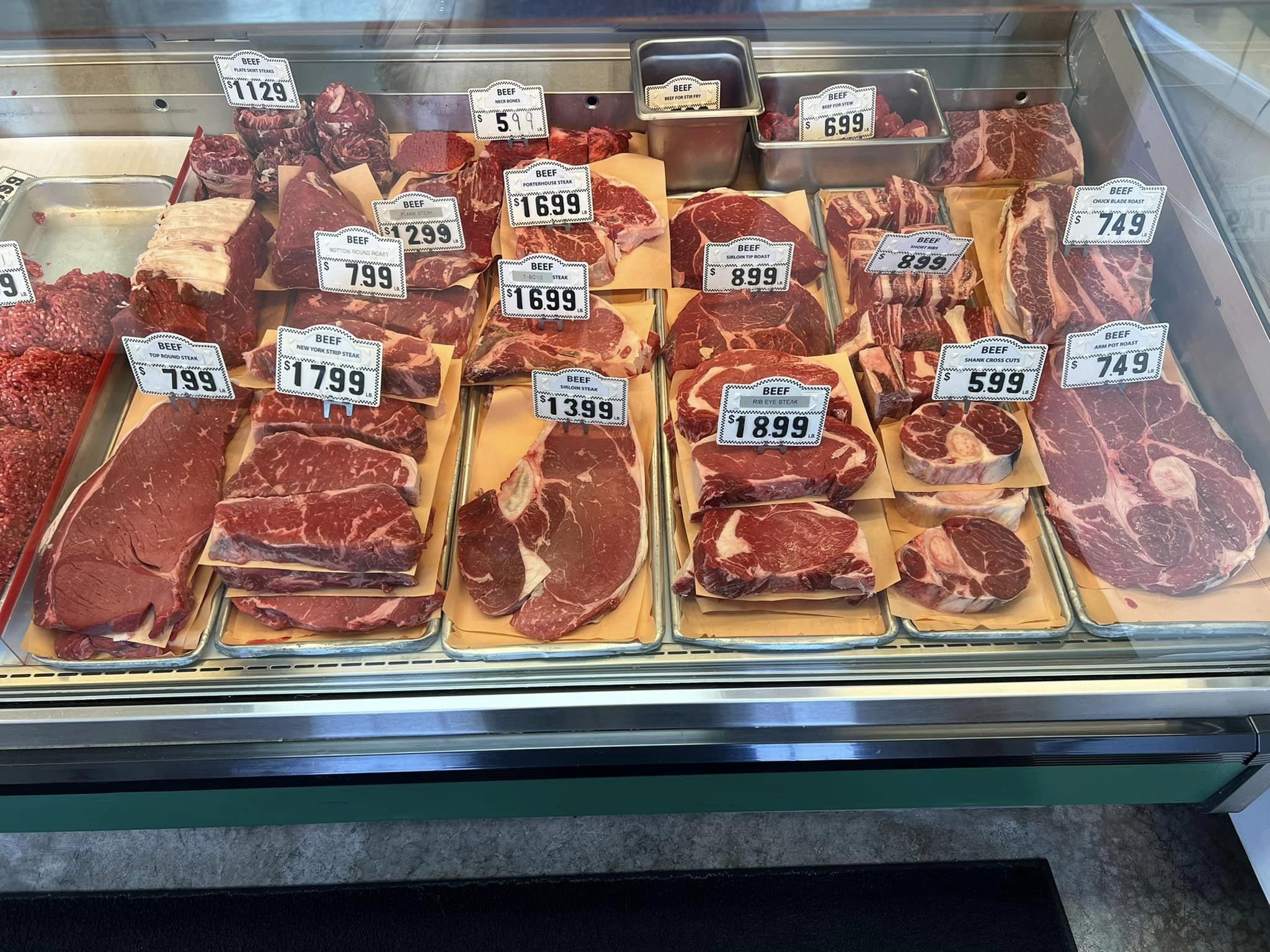Obtain the most effective Bargains on Fresh Meat at Bagley Farms Meat Market Edwardsville IL
Obtain the most effective Bargains on Fresh Meat at Bagley Farms Meat Market Edwardsville IL
Blog Article
Discover the Art of the Butcher's Cut in a Modern Meat Market
In the ever-evolving landscape of modern-day meat markets, the butcher's cut has actually transcended its conventional roots, combining olden workmanship with modern techniques. Today's butchers are not merely processors of meat; they are experienced artisans who emphasize sustainability and moral sourcing. Their expertise in picking and preparing cuts tailored to specific culinary needs uses an unparalleled dining experience. Yet, what really sets the modern butcher apart is their ability to create a deeper link in between consumers and the origins of their meat. How do these masters equilibrium tradition with development, and what implications does this have for the future of meat intake?
Evolution of Butchery Strategies
The evolution of butchery strategies reflects an abundant tapestry of innovation and adaptation driven by innovations in innovation, adjustments in consumer demand, and a much deeper understanding of meat science. Historically, butchery was a craft passed down via generations, with methods refined over centuries to maximize yield and taste. The industrial change ushered in mechanization, transforming typical practices and making it possible for large-scale processing.
The mid-20th century saw butchery methods further improved by scientific insights right into muscle biology and meat aging, improving both inflammation and taste. Advancements like vacuum cleaner packaging and refrigeration expanded product shelf-life, enabling butchers to diversify offerings and boost high quality control. This period also noted the rise of customized equipment, such as band saws and meat slicers, which raised precision and performance in meat processing.

The 21st century has actually presented electronic innovation right into the butchery world. Electronic systems now help in tracking animal provenance and enhancing cuts to satisfy certain consumer choices. Additionally, a renewal in artisanal butchery has actually arised, mixing standard abilities with modern knowledge to accommodate consumers seeking honest and sustainable meat alternatives. This advancement highlights a dynamic interaction between custom and development, meeting modern demands while preserving the craft's heritage.
Understanding Meat Cuts
Understanding the complexities of meat cuts is crucial for both butchers and consumers seeking top quality and value. For butchers, accurate cuts show ability and respect for the craft, guaranteeing very little waste and optimum yield.

Understanding muscle composition is important; muscle mass utilized much more frequently by the pet have a tendency to be tougher and are best suited for slow cooking approaches, while less-used muscular tissues, like those discovered in the loin, are a lot more tender and suitable for barbecuing or roasting. Experience with these distinctions empowers consumers to make informed options, improving their culinary ventures.
Selecting High Quality Meat
Selecting the appropriate meat includes even more than just picking a visually enticing item from the display. The art of choosing high quality meat calls for a discerning eye and knowledge of certain features that signify freshness and excellence.
Secondly, think about the marbling, which describes the white streaks of fat within the muscle. Appropriate marbling is a crucial indication of inflammation and flavor, as it melts throughout food preparation, boosting the meat's juiciness. Remember, greater marbling frequently associates with exceptional top quality cuts, such as USDA Prime.
Texture is another important variable; meat should feel solid to the touch, not slimed or extremely soft. Additionally, be conscious of the scent. Fresh meat ought to have a tidy, neutral smell, complimentary from any sour or repulsive odors.
Coupling Cuts With Food Preparation Methods

Alternatively, tougher cuts like brisket and chuck roast are abundant in collagen, which breaks down into jelly when prepared slowly. These cuts are suitable for braising or sluggish roasting, allowing the meat to soften with time and create deep, complicated tastes. Similarly, cuts such as brief ribs and pork shoulder prosper with slow-cooking techniques, where extended cooking times transform their durable textures right into delicious recipes.
Lamb shanks and oxtail, which require extended cooking to tenderize, are excellent prospects for stewing or sluggish simmering. These approaches coax out rich, hearty flavors while preserving dampness. By recognizing the one-of-a-kind characteristics of each cut, chefs useful site and home cooks alike can elevate their culinary creations, making sure each recipe is both pleasing and remarkable.
The Butcher's Role Today
Browsing the evolving landscape of the modern-day meat market, the butcher's role today prolongs beyond simple preparation of cuts. Contemporary butchers are cooking click this link craftsmens, teachers, and supporters for lasting practices.
In enhancement to crafting exact cuts, butchers now involve directly with customers, offering cooking recommendations and customizing choices to fit private needs and choices. Their proficiency in meat aging, marbling, and flavor accounts equips customers to make enlightened decisions, boosting their culinary experiences. This tailored service exemplifies the butcher's advancing function as a trusted advisor in the kitchen.
Additionally, butchers are critical in minimizing waste, using entire animals to produce varied products such as sausages and stocks. This thorough approach not only values the animal however additionally aligns with contemporary sustainability goals. In this means, the modern butcher symbolizes both practice and innovation, adjusting to an ever-changing market while maintaining the creativity and honesty of their craft.
Verdict
The contemporary butcher's craft elaborately weaves traditional methods with modern advancements, stressing sustainable practices and moral sourcing. Mastery in understanding diverse meat cuts and quality signs equips butchers to give enlightened referrals, aligning certain cuts with optimum food preparation approaches. This knowledge not only elevates culinary experiences yet additionally reinforces the check this site out link between consumers and the origins of their food. By recognizing historic methods while accepting contemporary demands, the butcher's duty continues to be crucial in today's innovative meat market (bagley farms meat market edwardsville il).
Report this page